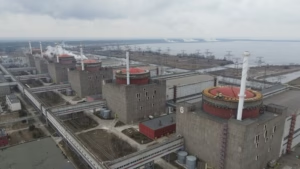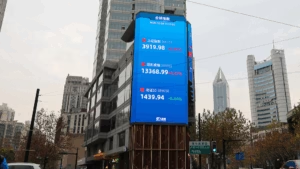The solar industry, once seen as a beacon of hope in the renewable energy sector, is on the decline. SunPower, a company with 39 years of experience in the solar rooftop business, recently became the latest casualty in a wave of industry failures this year. Other companies that have met a similar fate include Titan Solar Power and Sunworks.
According to SunPower, a “severe liquidity crisis caused by a sharp decline in demand in the solar market and SunPower’s inability to obtain new capital” was the primary reason for its downfall. This development is perplexing, especially given that the Inflation Reduction Act (IRA) was designed to boost solar subsidies. The question arises: why has demand for solar energy decreased?
One contributing factor is the rise in interest rates, which has made leasing rooftop panels less appealing to consumers. Additionally, certain states, such as California, have reduced the incentives they offer for customers who sell excess solar power back to the grid.
While these programs were intended to encourage the adoption of solar energy, they inadvertently increased the cost of electricity for those without solar panels. In California, the grid is frequently overloaded with solar power, further complicating the situation.
Another issue plaguing the industry is the rising cost of solar panels, which has been exacerbated by general inflation and tariffs imposed by President Biden’s administration. These tariffs, supported by domestic manufacturers and Democrats in Congress, were intended to promote the production of solar panels within the United States. However, as solar installers had warned, these tariffs have had a detrimental impact on their industry. The result is a paradoxical situation where the jobs created by Biden’s subsidies are being offset by the losses caused by tariffs and inflation.
This trend isn’t limited to solar energy. Offshore wind projects are also being abandoned due to rising costs and interest rates that render them financially unviable, even with subsidies. For example, BP wrote down its U.S. offshore wind business by $1.1 billion last year. Similarly, Orsted, a leading wind developer, announced $4 billion in write-downs after halting two projects off the coast of New Jersey.
The challenges extend beyond wind energy. BP has recently scaled back a planned U.S. biofuels investment. Shell, another major energy company, announced this year that it would close its hydrogen refueling stations in California due to low demand for fuel-cell vehicles and reduced subsidies for hydrogen production. This situation highlights the risk of stranded assets in the renewable energy sector.
The attempt to force solar panel production within the United States, while well-intentioned, has led to several unintended consequences:
No significant increase in U.S. production: The high costs associated with domestic manufacturing have deterred widespread adoption.
Job losses among installers: The tariffs have made solar panels more expensive, leading to a decline in demand and, consequently, a reduction in jobs.
Stagnation in clean energy progress: The goal of furthering clean energy has been undermined by the higher costs and reduced demand.
Moreover, the electric vehicle (EV) industry is facing its own set of challenges. Despite government subsidies, Ford is reportedly losing more than $100,000 on each electric vehicle it manufactures.
The company has responded by cutting $12 billion from its EV plans and is projected to lose $5.5 billion from its Model e division in 2024. This situation raises a critical question: do we truly want a rapid expansion of EVs and clean energy projects, or not?
How much did Ford lose on EVs?
The insistence on using only “made-in-USA” components, when the necessary infrastructure is not yet in place and demand remains low, is leading to significant financial losses. Unfortunately, this scenario suggests that tariff wars are likely to continue, regardless of the outcome of future elections.
“The attempt to force production of solar panels in the US resulted in prices so high that few wanted them,”
reads a critical observation from industry analysts. This statement encapsulates the broader challenges faced by the renewable energy sector as it grapples with the complexities of balancing domestic production goals with the need for affordable and sustainable energy solutions.

















